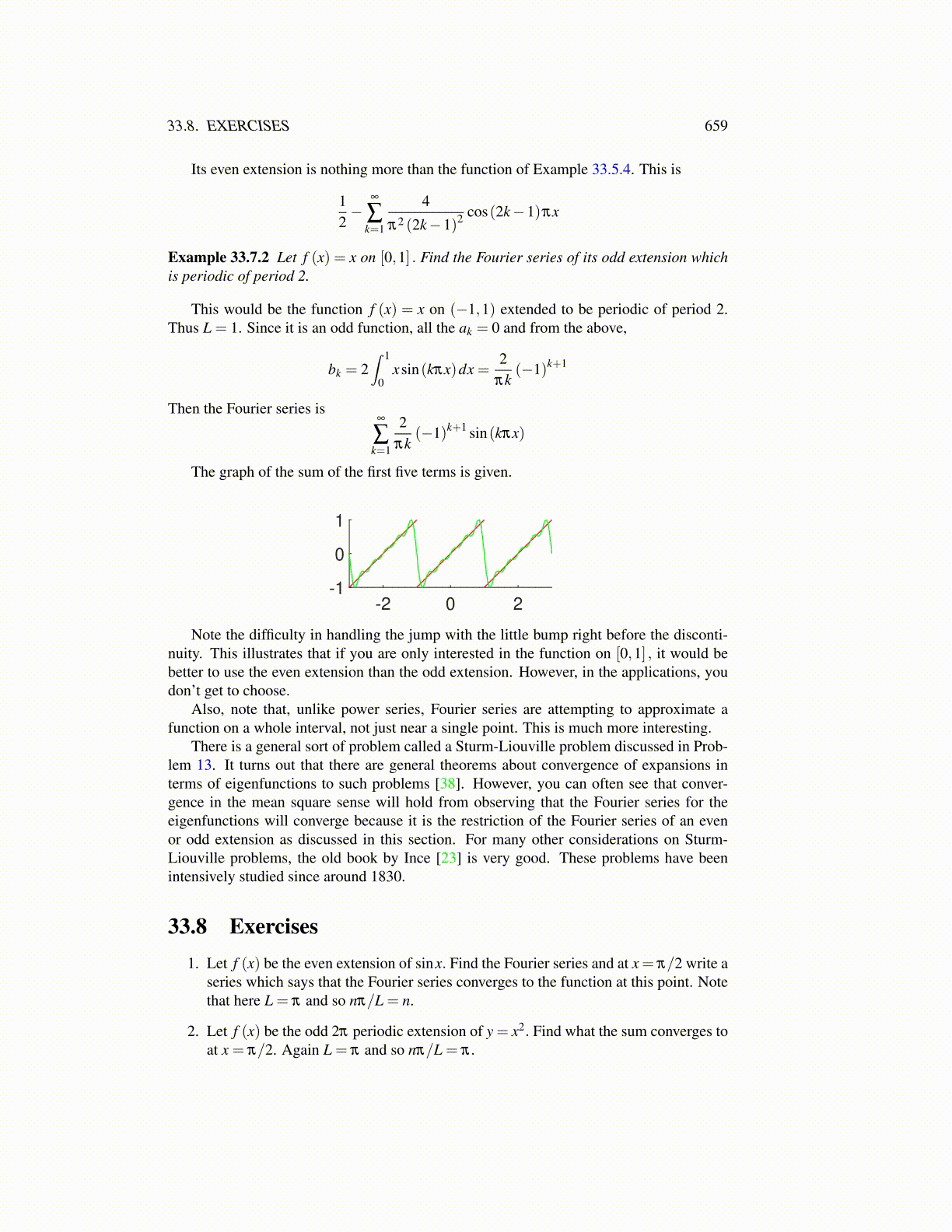
33.8. EXERCISES 659
Its even extension is nothing more than the function of Example 33.5.4. This is
12−
∞
∑k=1
4
π2 (2k−1)2 cos(2k−1)πx
Example 33.7.2 Let f (x) = x on [0,1] . Find the Fourier series of its odd extension whichis periodic of period 2.
This would be the function f (x) = x on (−1,1) extended to be periodic of period 2.Thus L = 1. Since it is an odd function, all the ak = 0 and from the above,
bk = 2∫ 1
0xsin(kπx)dx =
2πk
(−1)k+1
Then the Fourier series is∞
∑k=1
2πk
(−1)k+1 sin(kπx)
The graph of the sum of the first five terms is given.
-2 0 2-1
0
1
Note the difficulty in handling the jump with the little bump right before the disconti-nuity. This illustrates that if you are only interested in the function on [0,1] , it would bebetter to use the even extension than the odd extension. However, in the applications, youdon’t get to choose.
Also, note that, unlike power series, Fourier series are attempting to approximate afunction on a whole interval, not just near a single point. This is much more interesting.
There is a general sort of problem called a Sturm-Liouville problem discussed in Prob-lem 13. It turns out that there are general theorems about convergence of expansions interms of eigenfunctions to such problems [38]. However, you can often see that conver-gence in the mean square sense will hold from observing that the Fourier series for theeigenfunctions will converge because it is the restriction of the Fourier series of an evenor odd extension as discussed in this section. For many other considerations on Sturm-Liouville problems, the old book by Ince [23] is very good. These problems have beenintensively studied since around 1830.
33.8 Exercises1. Let f (x) be the even extension of sinx. Find the Fourier series and at x = π/2 write a
series which says that the Fourier series converges to the function at this point. Notethat here L = π and so nπ/L = n.
2. Let f (x) be the odd 2π periodic extension of y = x2. Find what the sum converges toat x = π/2. Again L = π and so nπ/L = π .